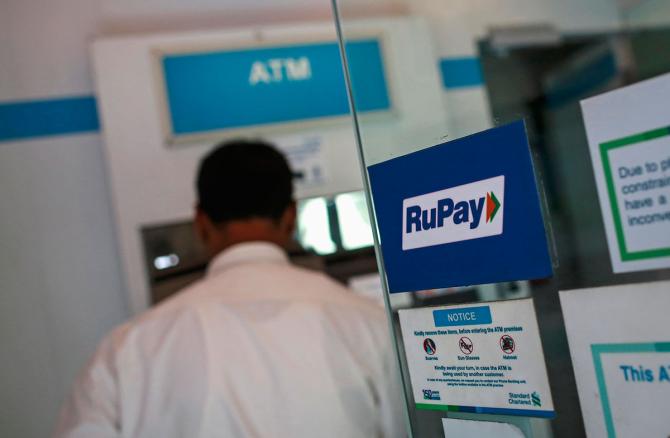Recent RBI data indicates net addition of credit cards is running strong at 18 per cent year-on-year (Y-o-Y), but growth in credit card limits is ahead of loans outstanding.

Growth in lower limit cards is decelerating fastest.
The West and South have more usage and online transactions are more popular than offline, with metros leading growth.
One game-changer could be increasing the penetration of RuPay cards, which run on the UPI platform.
The other policy decision that could negatively impact the sector short term is RBI tightening norms for unsecured loans.
Opening up UPI to credit cards and digitisation of existing cards to RuPay could add 30 million new acceptance points.
Roughly 70 per cent of UPI Person to Merchant transactions spends (P2M) are Merchant-Discount-Rate (MDR)-accretive.
Payment platforms and fintechs (like Paytm, PhonePE and Google Pay) would benefit most.
Card-issuers like SBI Cards can also capture a share of UPI spends but may lose MDR on low-value transactions since RuPay MDR only kicks in above Rs 2,000.
RuPay includes cards for existing users (as an add-on), as well as new card users.
Credit card spends on UPI has doubled over the period May'23 to Oct'23 with a daily average of Rs 100 crore (Rs 150-200 crore on weekends).
This is about 2 per cent of credit card online spends.
The RuPay card base is small at 8 million but growing fast with 25 per cent of monthly new issues.
If the trend continues over the next 12-18 months, roughly 35 million credit cards may move to UPI with $60 billion in payment volumes.
The UPI merchant payments monthly run rate of Rs 4.4 trillion is over 2.5x of credit card spends.
About 70 per cent comes from large ticket ( above Rs 2,000) transactions.
Even a 10 per cent penetration could lead to annualised $60 billion in incremental MDR-accretive spends.
But merchant resistance exists since MDR has a cost as opposed to free UPI and this is a key risk for RuPay.
The model also includes a reimbursement of 8 basis points (bps) to the payment app.
This enables payment platforms to monetise the transaction on both consumer (8bps) and merchant (15-20 bps).
For example, Paytm with its largest merchant base on UPI and 3rd largest consumer base, could see a 5 per cent shift in gross merch a ndise value or GMV to credit card on UPI leading to a 10 per cent gain in FY26 profit before tax.
Card players should eventually gain from the wider acceptance network and the share of UPI P2M spends.
Since UPI linkages only work on RuPay network, the issuance of RuPay cards to existing and new users is a pre-requisite.
RuPay holds around 12 per cent of the 18 million-base of SBI Cards, which is the only pure-play listed card issuer.
The MDR on UPI-linked RuPay card spends would be lower than normal spends, given no MDR on lower than Rs 2,000 transaction.
Hence, in the short-term, SBI Cards could lose MDR on small-ticket spends shifting from Master/Visa platform to RuPay.
About 75 per cent of online transactions are via credit cards with around 65 per cent of value online.
About 70 per cent of the value and 80 per cent of cards outstanding are from metros.
There s not yet much apparent impact on spends due to the recent increase of risk weight by RBI.
These trends - the migration via RuPay from Master/Visa, and the opening up of new PoS change the market dynamics.
It should definitely be positive for Paytm but the impact is more nuanced and harder to judge for SBI Cards.











